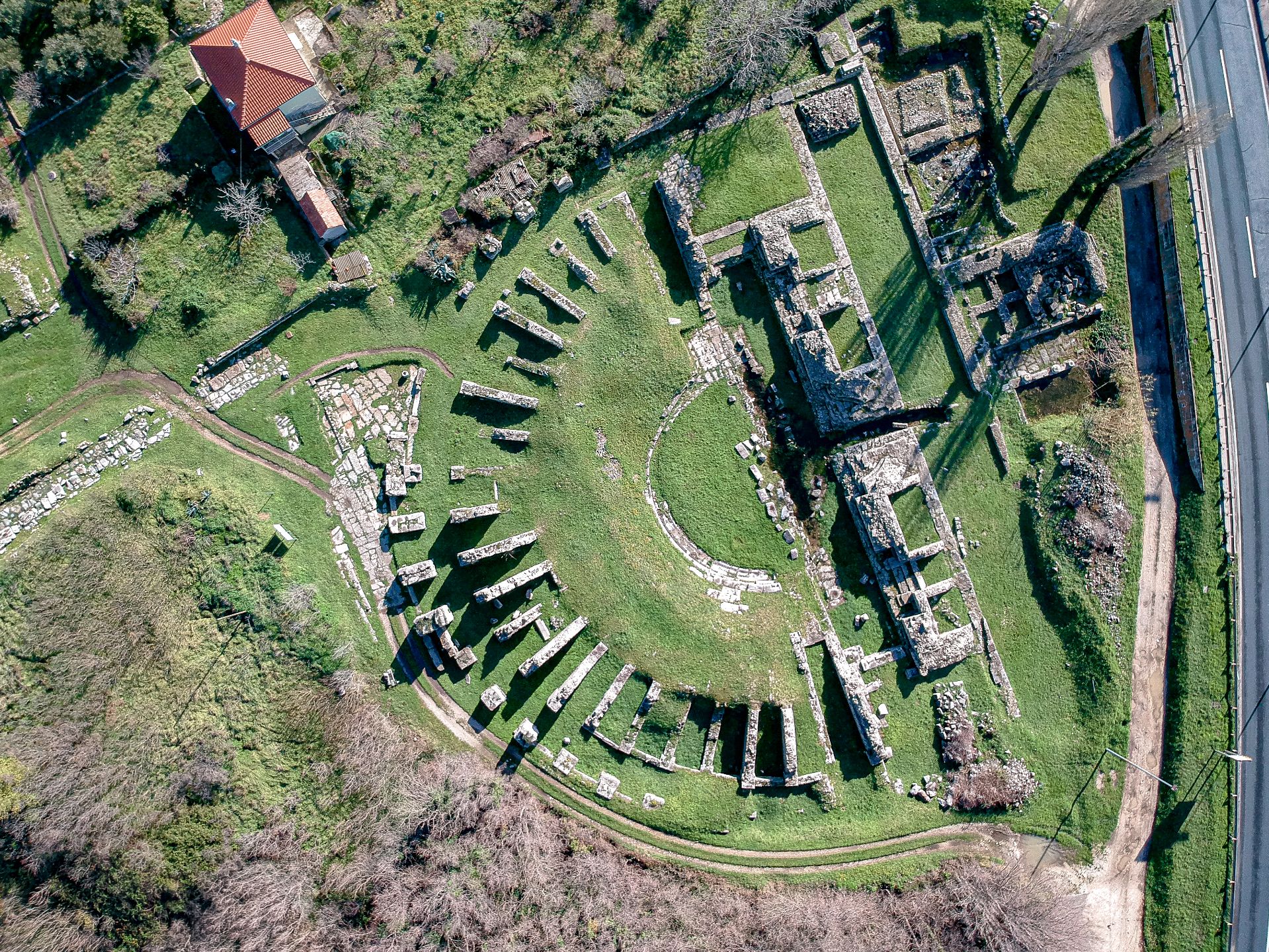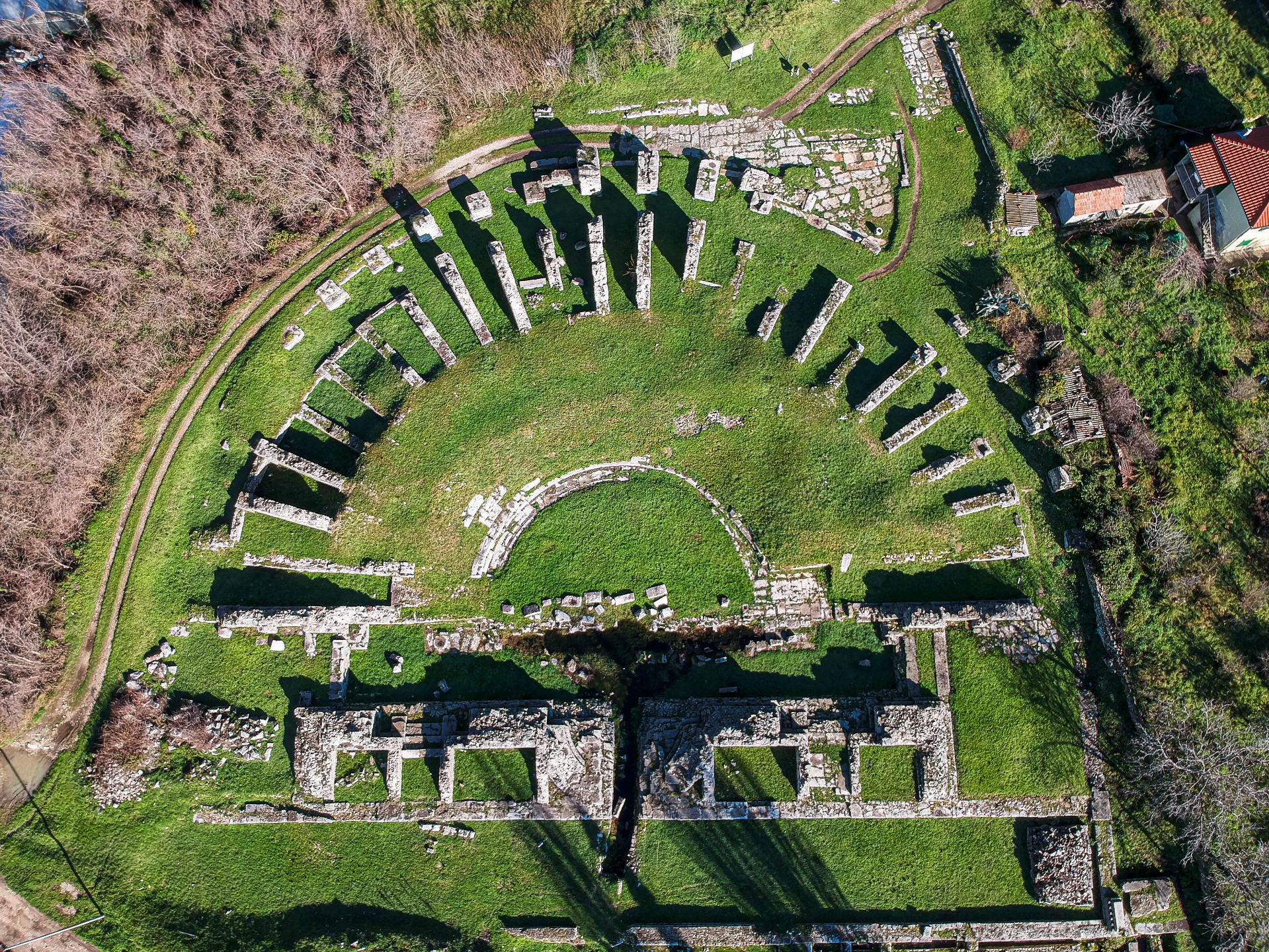Large towns of Roman times normally had at their squares, besides public administrative buildings (curia, basilica-courtroom, porticoes), a theatre, too, that determined the town’s cultural level. The theatre of Salona is situated in the southern part of the old, trapezoidal town core; today it is by the road to Kaštela and Trogir. Almost all its elements have been preserved, this enabled quite an accurate reconstruction of the structure to be built. It was originally constructed in the mid first century A.D.
Excavations were commenced by F. Bulić in 1900, and the most important ones were performed by the previously mentioned Danish archaeological mission in 1922-1924. Unfortunately, not all excavation results have been published, so that a complete presentation of all the excavations and discoveries related to the theatre of Salona are not available. The last to write about the theatre was Duje Rendić Miočević.
The theatre was erected on elevated ground, on the site of an older building, probably a sanctuary, the remains of which are visible at its southern part. The building of the theatre took advantage, about the same time as the amphitheatre, of the natural configuration of land, on which the concentric rows of seats were placed. Most probably, it was built during the second half of the first century A.D. Notwithstanding some subsequent building alterations, it preserved its shape until Diocletian’s era. That is the period when the theatre underwent significant changes: the front part of the stage (scenae frons) was richly decorated, in a manner similar to those found in some buildings in the emperor’s Palace, and in its southern part a façade was erected which incorporated a porch overlooking the town harbour. The stage was also adapted to new theatrical requirements. At that time Salona was at its peak, and such changes were quite logical.
Tourist board of Solin
Solin - Cradle of Ancient and old Croatian History
@








